Key takeaways:
- Selective mutism is an anxiety disorder that makes communication difficult for children in social situations, requiring patience and understanding from family members.
- Open family discussions about selective mutism can build compassion and normalize the child’s experience, allowing for a supportive environment.
- Creating a safe and inviting space for conversations encourages children to express themselves more freely and comfortably.
- Long-term open communication fosters trust, emotional intelligence, and collaborative problem-solving within the family unit.

Understanding selective mutism
Selective mutism is a complex anxiety disorder that primarily affects children, making it difficult for them to speak in certain social situations despite having the ability to communicate verbally in comfortable environments. I remember a time when my child, who was typically chatty at home, became almost mute during a family gathering. It was painful to witness, and it made me wonder: how can such a vibrant personality fade away in unfamiliar settings?
Many parents may feel a mixture of confusion and frustration, especially when their child appears perfectly fine at home but struggles in the presence of peers or strangers. I often found myself pondering what my child was feeling in those moments of silence. Was it fear of judgment? A sense of being overwhelmed? These reflections highlight that beneath the surface of selective mutism lies an emotional landscape rich with complexity, often misunderstood by even the closest family members.
Understanding selective mutism involves recognizing that it’s not simply shyness; rather, it is rooted in anxiety and can be deeply isolating for the child. For instance, I recall how my child clung to my side at a birthday party, anxiety written all over their face. That moment illuminated the importance of creating a supportive environment that encourages communication at their own pace, reminding me, and hopefully others, that patience and understanding foster progress.
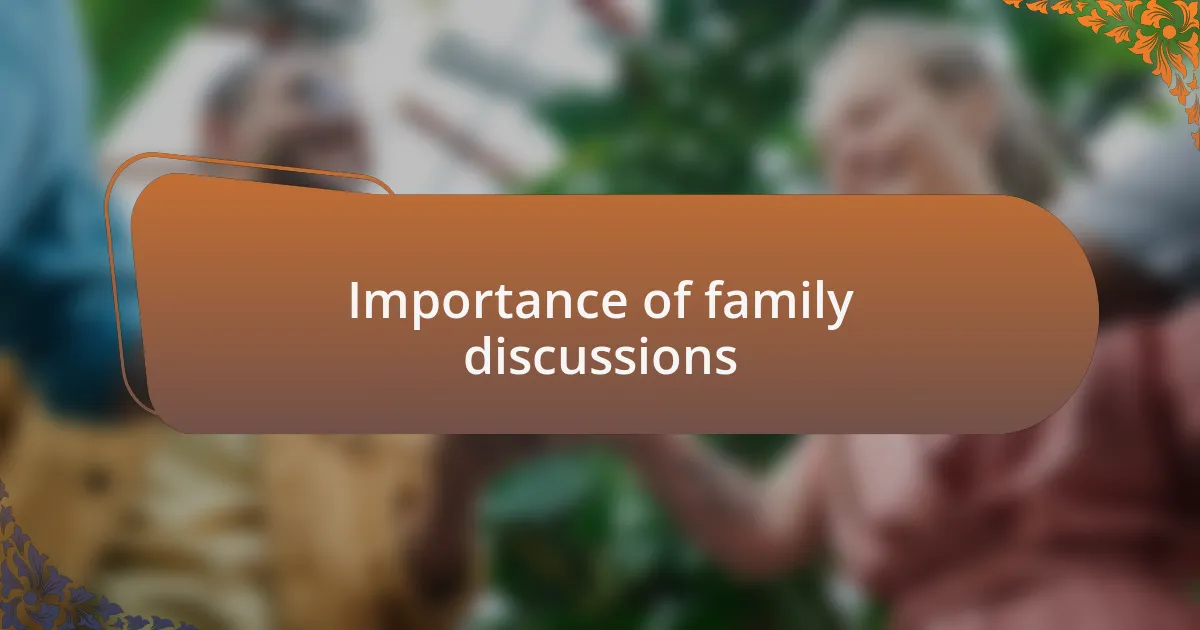
Importance of family discussions
It’s essential to have open discussions within the family about selective mutism, as it builds a foundation for understanding and support. I remember sitting down with my family, allowing everyone to share their feelings about my child’s struggles. Those conversations transformed the atmosphere from confusion to compassion, showing us that we were all in this together.
Family discussions also provide a safe space where each member can express their concerns and share insights. One evening, I encouraged my partner to voice his thoughts on how our responses affected our child. This led to a crucial realization: our reactions, both verbal and non-verbal, significantly impact a child’s comfort level. It made me wonder how many families miss these pivotal moments of awareness because they shy away from uncomfortable topics.
When we approach discussions about selective mutism with empathy, we normalize the experience for our child. I’ve found that discussing challenges openly can not only alleviate tension but also create a united front. By embracing these conversations, we set the stage for understanding, ultimately nurturing an environment that fosters courage and growth.
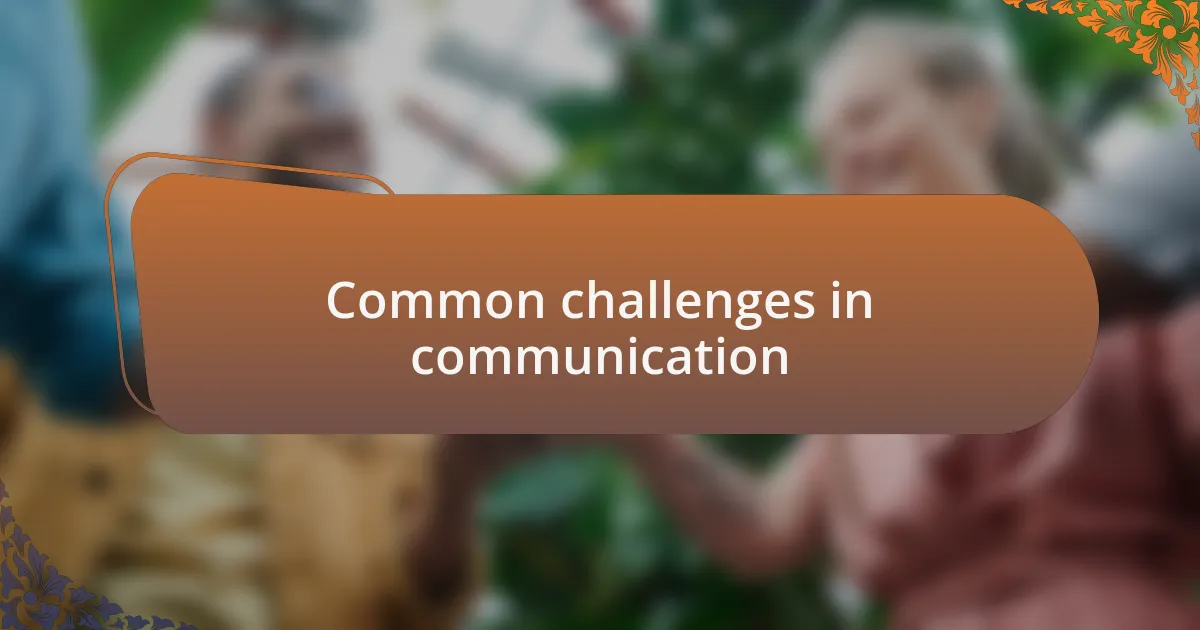
Common challenges in communication
Communication hurdles can manifest in various ways during family discussions about selective mutism. I recall a specific instance when my child struggled to articulate feelings during a discussion about school. It became clear that wanting to speak and being able to speak were two different things, leaving us all feeling a bit helpless. How do you truly engage someone who wishes to communicate but is paralyzed by anxiety?
Another challenge is navigating emotional responses within the family. There have been moments when my frustration crept in when conversations seemed to go in circles. It dawned on me that while I was eager to find solutions, my child needed reassurance more than anything else. This made me question if others have experienced similar feelings of urgency and frustration in their discussions.
Sometimes, the silence speaks louder than words. During a family meeting, I noticed my child’s body language change — slumped shoulders and a downcast gaze. It struck me that communication isn’t solely about verbal exchanges; it’s about interpreting those non-verbal cues. Have you ever paused to consider the messages conveyed through silence or hesitation? It’s a critical aspect often overlooked in discussions, and recognizing it can shift the entire dynamic for a more inclusive dialogue.
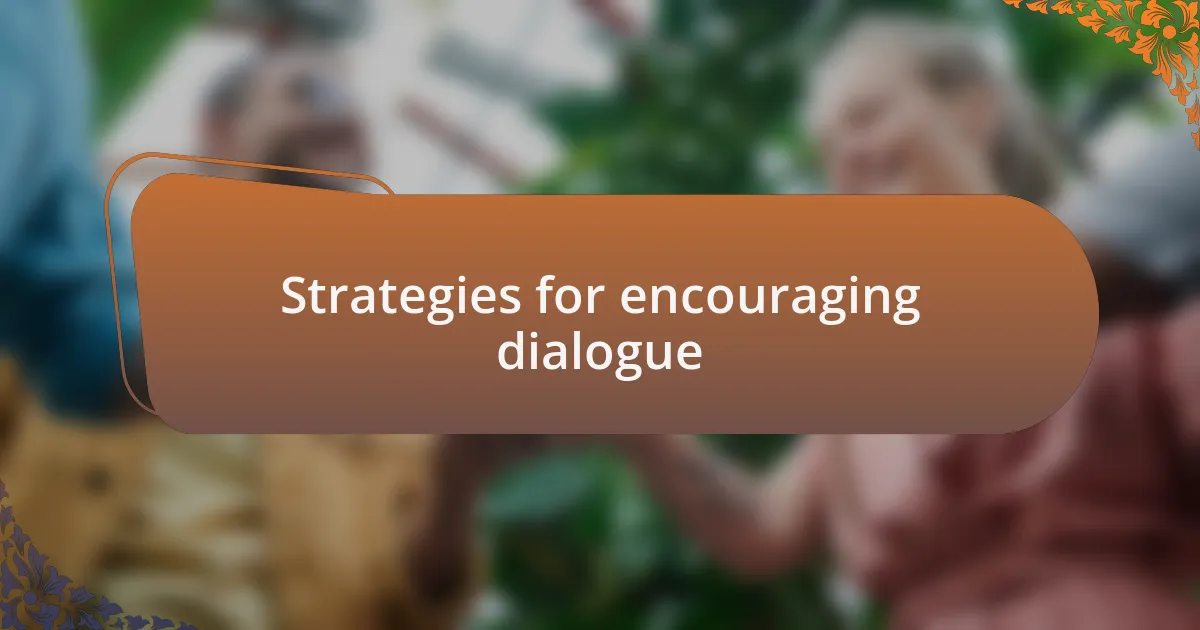
Strategies for encouraging dialogue
Finding the right moment to encourage dialogue has been vital in my experience. I remember one evening when we were having dinner. Instead of diving straight into heavy topics, I suggested sharing one positive moment from our day. It was a gentle way to ease my child into conversation, allowing them to express themselves without the pressure of discussing more complex feelings.
Using questions that invite, rather than interrogate, can also transform the atmosphere. I like to ask open-ended questions, such as “What was your favorite part of the week?” This approach opens the door for my child to share more than just a simple answer. It fosters a sense of autonomy in their response, making them feel more secure knowing they’re in control of how much they want to share.
Additionally, creating a safe space for expression has made a huge difference. I set up a cozy corner with soft lighting and comfy cushions, where we can sit and talk. It’s become a sanctuary for our family conversations. I’ve noticed that when the environment feels welcoming, my child is more willing to let their guard down. What elements in your home create a sense of safety for open dialogue?
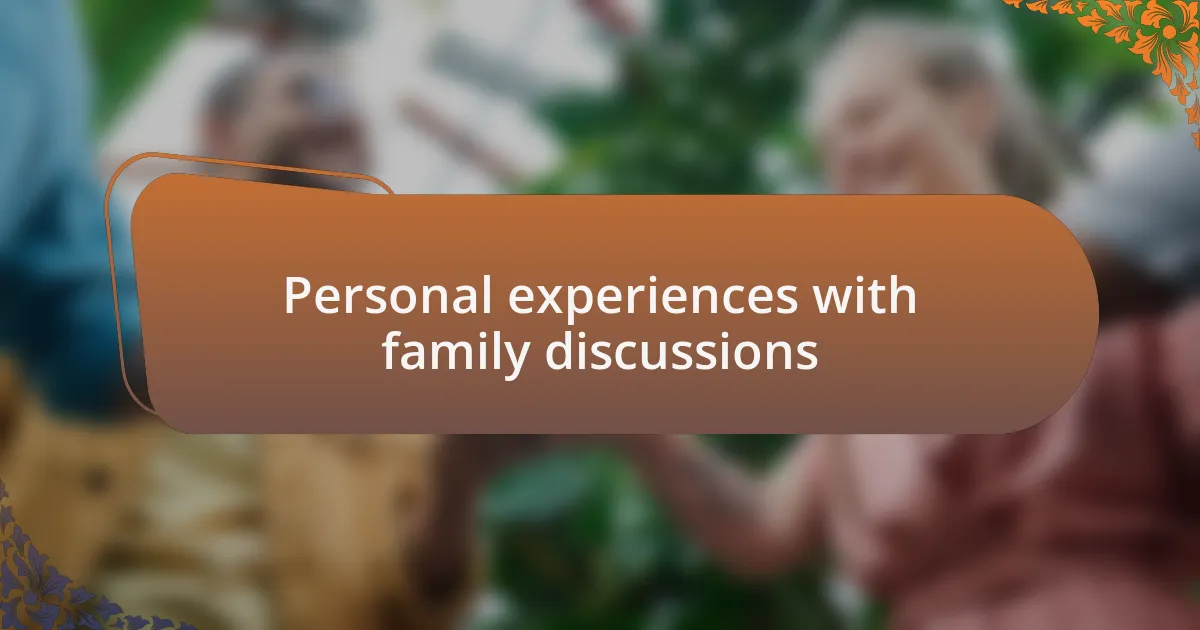
Personal experiences with family discussions
It was during one of those quiet Sunday afternoons that I stumbled upon the power of storytelling in our family discussions. I decided to share a light-hearted story from my childhood, one that involved a funny mishap. As I recounted the tale with enthusiasm, I noticed my child’s eyes lighting up. This spontaneous storytelling session opened the floodgates, leading them to share their own silly experiences, which brought laughter and helped to bridge the communication gap we often faced.
One pivotal moment for me was when I realized the importance of validating my child’s feelings. I remember sitting in the living room, discussing a tough day at school. Instead of jumping to provide solutions, I paused to reflect back what they were feeling. “It sounds like you felt really frustrated and overwhelmed.” Just by acknowledging their emotions without immediately steering toward resolution, I could see how much more comfortable my child became in expressing themselves. Have you ever considered how such validation can change the conversation dynamics in your home?
I’ve also found that timing can make all the difference. There’s a particular evening that stands out when I chose to talk during a cozy family game night. As we joked and played, I simply asked for thoughts about school in a casual manner, shifting the focus back to fun. This relaxed setting allowed for a more organic discussion, where my child felt free to share worries without the usual pressure. Reflecting back, I now often wonder how pivotal it can be to align conversations with shared experiences. Have you noticed how informal settings can sometimes encourage deeper discussions?
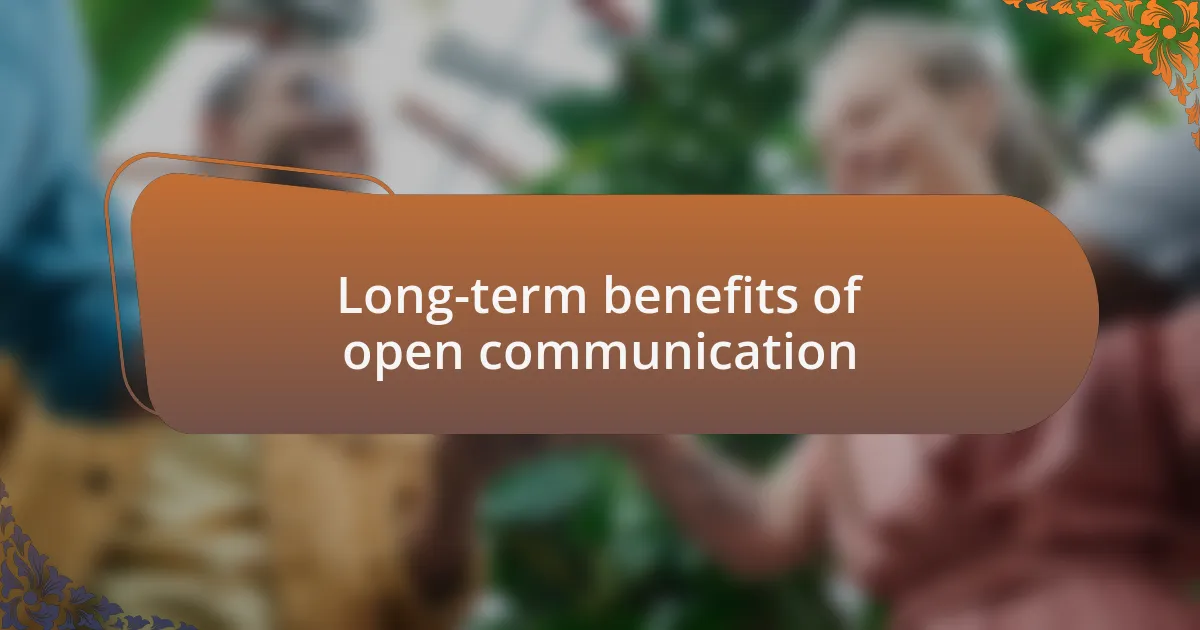
Long-term benefits of open communication
Open communication fosters a deep sense of trust within the family, which can be invaluable over time. I recall a family dinner when we decided to discuss our expectations and fears openly. As each person shared, it felt like lifting a weight off our chests. This transparency not only strengthened our bonds but also laid a foundation where everyone felt comfortable sharing their thoughts in the future. How often do we underestimate the power of simply expressing ourselves?
The long-term benefits of sharing openly extend beyond immediate relief; they encourage emotional intelligence in children. I’ve noticed my kids gradually becoming more aware of their feelings and the feelings of others. For instance, after our discussions, my youngest began to articulate his worries about friendship issues with far more clarity. Isn’t it rewarding to see your children develop these crucial skills that will serve them throughout their lives?
Moreover, open conversations contribute to improved problem-solving abilities as family members learn to collaborate. I remember when we faced a difficult decision about moving to a new city. Through open dialogue and collective brainstorming, we transformed anxiety into a collaborative project, turning apprehensions into actionable steps. Have you ever realized how involving your family in joint discussions can lead to innovative solutions? This exchange of ideas not only empowers us but also creates an environment where every voice matters.